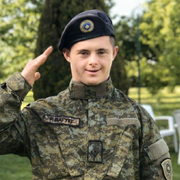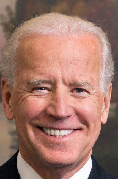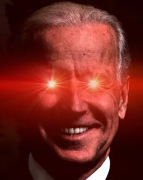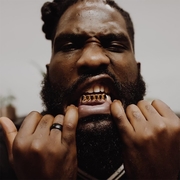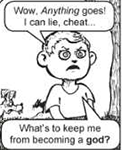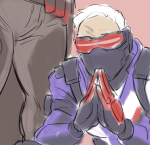|
Kalit posted:Oh yea, that is absolutely 1000% abysmal. Our public schooling system is horrifically underfunded and we do need to dump money into it. It's not easy as "shifting money around", I thought? Do you see where I'm going with this? It IS that easy. It's lack of understanding and will.
|
|
|
|

|
| # ? May 27, 2024 07:40 |
|
Kalit posted:Actually I'm just re-reading my original question and I didn't have "increase the overall budget" in my assumptions. It was just a side note in talking about Portland that I mistyped (and since clarified), but I wanted to expand beyond that. What?
|
|
|
|
Every school district everywhere already has to deal with budgets every year for something as important as basic education. The only reason this is like this is that our society is so broken that it hates teachers and loves the televised and movie ideal of what it thinks cops might sorta be.
|
|
|
|
Jaxyon posted:Just LOL that I have teacher friends going broke to buy supplies for their classes of 8 year olds and cops can't even field a slight reduction in their military cosplay slush fund Well let's explore this a bit, would you be for increasing the education budget if you had to accept an increase to the police MRAP budget as well, or are you so dogmatic and inflexible that you'd tell 8 year olds they can't get more school supplies in order to punish our boys in blue for wanting an Abrams for Christmas?
|
|
|
|
VitalSigns posted:Well let's explore this a bit, would you be for increasing the education budget if you had to accept an increase to the police MRAP budget as well, or are you so dogmatic and inflexible that you'd tell 8 year olds they can't get more school supplies in order to punish our boys in blue for wanting an Abrams for Christmas? These poor underserved children are having their studytime regularly interrupted by all these gangbangers, so don't think the MRAP budget is essentially education? Right. *LAPD literally blows up a neighborhood in the background*
|
|
|
|
Jaxyon posted:It's not easy as "shifting money around", I thought? I was talking about shifting money around within a department when approvals are needed, if there's enough buy in from the department itself. In the specific case I was talking about, from the mayor and entire city council. The public school system being entirely underfunded isn't even close to the same thing? Kalit fucked around with this message at 20:37 on Aug 5, 2021 |
|
|
|
Kalit posted:I was talking about shifting money around within a department when approvals are needed. In the specific case I was talking about, from the mayor and entire city council. The public school system being entirely underfunded isn't even close to the same thing? Coming from government, moving money around is NOT mechanically difficult - it's just numbers on ledgers. Having the political WILL to defund something to fund something else is a whole another animal but it can happen basically instantaeously. The process of getting approvals/change orders etc is what slows it down.
|
|
|
|
Yuzenn posted:Coming from government, moving money around is NOT mechanically difficult - it's just numbers on ledgers. Having the political WILL to defund something to fund something else is a whole another animal but it can happen basically instantaeously. The process of getting approvals/change orders etc is what slows it down. Thank you for pointing this out as well, I missed that part and just edited it in. I was thinking from the perspective of dumping money into public schools, where they would welcome it with open arms. Mandating money be moved from one area to another area of a department would likely cause internal resistance, especially from the police if it means more oversight.
|
|
|
|
Kalit posted:I was talking about shifting money around within a department when approvals are needed, if there's enough buy in from the department itself. In the specific case I was talking about, from the mayor and entire city council. The public school system being entirely underfunded isn't even close to the same thing? If we cared it about as much as we cared about guys in blue pretending to be an old west sheriff but with more steroids and more guns it would have money. People would take form other parts of the budget to fund it. That's what we have now. Except they're taking from the schools to fund the violent gangs.
|
|
|
|
Kalit posted:I was talking about shifting money around within a department when approvals are needed, if there's enough buy in from the department itself. In the specific case I was talking about, from the mayor and entire city council. The public school system being entirely underfunded isn't even close to the same thing? ok so your hypothetical is a mayor and city council willing to require bodycams but unwilling to shift money around within the police department to pay for it? I think I found the problem, and it's not with the people who think it's unnecessary to increase police budgets yet again E: Kalit posted:Mandating money be moved from one area to another area of a department would likely cause internal resistance, especially from the police if it means more oversight.
|
|
|
|
Making the case that people should support sensible incremental reforms to address police brutality rather than defunding police by...arguing that it's physically impossible for reformers to shift even a single dollar away from police militarization and toward oversight VVVV Sure, Jan VitalSigns fucked around with this message at 20:59 on Aug 5, 2021 |
|
|
|
VitalSigns posted:Making the case that people should support sensible incremental police reforms to address reforms rather than defunding them by...arguing that it's physically impossible for reformers to shift even a single dollar away from police militarization and toward oversight I'm not making any case? I asked a question to gain more perspective on it and also explained what had been going on in Minneapolis with the EIS system.
|
|
|
|
Kalit posted:Thank you for pointing this out as well, I missed that part and just edited it in. I was thinking from the perspective of dumping money into public schools, where they would welcome it with open arms. Mandating money be moved from one area to another area of a department would likely cause internal resistance, especially from the police if it means more oversight. This argument boils down to "we shouldn't tell the police no, because they might get mad."
|
|
|
|
eSporks posted:It would cause internal resistance, and that's why it needs to happen. Anything effectual will cause internal resistance. If its not causing internal resistance, its just keeping up the status quo. This idea that causing internal resistance is either a bad thing, or a barrier will also block any actual solution to our policing issue. Viewing it this way fundamentally ignores the issue, which is how police see their job and purpose in the community, and how police respond to change and oversight. Exactly. A budget is a moral document. We're constantly causing internal resistance with teachers and often causing them to quit and sometimes having work shut downs over it. That's because we as a society do not give the slightest poo poo about education in any real way. We care about empowering police thugs to kill minorities.
|
|
|
|
Hopefully we can get some bodycams and maybe a catchy slogan on this.
|
|
|
|
See this is what happens when you defund the police, poor starving cops are forced to turn to a life of petty crime to survive
|
|
|
|
Don't know if this is the best place to ask this but, I was watching an episode of Elementary and Lucy Liu's character says that while "I.A. do put away bad cops they also put away a lot of good ones". It made me laugh because most U.S. cops seem to get away with nearly anything yet in the T.V. shows IA is seen at an enemy. However, I'm in the U.K. so I don't know how IA really works. Is there any true about "putting away good cops" (as close as you can to having a 'good cop' anyway)? Generally how do they work?
|
|
|
|
Itís more that their definition of ďgood copĒ is very different
|
|
|
|
bessantj posted:Don't know if this is the best place to ask this but, I was watching an episode of Elementary and Lucy Liu's character says that while "I.A. do put away bad cops they also put away a lot of good ones". It made me laugh because most U.S. cops seem to get away with nearly anything yet in the T.V. shows IA is seen at an enemy. However, I'm in the U.K. so I don't know how IA really works. Is there any true about "putting away good cops" (as close as you can to having a 'good cop' anyway)? Generally how do they work? There aren't "good cops" in the same way there aren't "good nazi guards", in that even the ones that aren't out-and-out evil are participating in a monstrously bad system and organization that more or less requires they act in awful ways. IA is barely a thing in US culture beyond the televised/movie version of them and what you're seeing in cop shows is the same thing that always happens when a privileged group is met with any sort of accountability: They freak the gently caress out and declare it the worst thing in history. In reality, cops protect cops. Internal investigations are there to lend a veneer of credibility so they don't have any face any real reckoning.
|
|
|
|
Jaxyon posted:There aren't "good cops" in the same way there aren't "good nazi guards", in that even the ones that aren't out-and-out evil are participating in a monstrously bad system and organization that more or less requires they act in awful ways. I don't know how IA actually works, but I would imagine there is a decent number of "good cops" (read: cops reporting other cops' misconduct) that get arbitrarily punished because of IA, but that's probably not what the show was talking about.
|
|
|
|
Jaxyon posted:In reality, cops protect cops. Internal investigations are there to lend a veneer of credibility so they don't have any face any real reckoning. Basically this. Police unions have backed IA forever because it lets them shield themselves from public scrutiny. The whole "we have investigated ourselves and found no wrongdoing" bullshit. Even the departments that have civilian oversight boards generally try to render them toothless as rapidly as possible.
|
|
|
|
Alright thanks, that does get a few things clear in my head.
|
|
|
|
bessantj posted:Don't know if this is the best place to ask this but, I was watching an episode of Elementary and Lucy Liu's character says that while "I.A. do put away bad cops they also put away a lot of good ones". It made me laugh because most U.S. cops seem to get away with nearly anything yet in the T.V. shows IA is seen at an enemy. However, I'm in the U.K. so I don't know how IA really works. Is there any true about "putting away good cops" (as close as you can to having a 'good cop' anyway)? Generally how do they work? Generally, Internal Affairs (IA) is the internal discipline mechanism for a law enforcement agency in the United States (and maybe elsewhere, but I can only speak to the US). Depending on the agency, this may be a dedicated section with permanent personnell/investigators, or it may be done on a more ad hoc basis--for instance, there may be a designated manager in the agency who handles IAs in addition to other duties, or IAs may be carried out by a regular line manager in response to complaints about their direct subordinants. An IA investigation's main focus is usually on whether the officer in question violated internal policy, whether or not that violation has criminal implications. In fact, far and away most of the allegations that IA deals with are non-criminal disciplinary matters. If evidence to support criminal charges turns up in the course of the investigation, the matter may be referred out for prosecution in addition to whatever internal discipline is being considered. In addition to the informal collusion you might expect within a law enforcement agency, officers subject to IA investigations benefit from more formal protections in a disciplinary investigation than just about any other sort of employee you might be able to imagine. Since the employer is typically a government agency, officers are entitled to 14th amendment due process protections and to 5th amendment protections against compelled self-incrimination (look up Garrity rights, if you are curious). Moreover, the whole IA process is tightly constrained by collective bargaining agreements with police unions. These typically impose timelines the investigation must be completed within, limitations on investigator access to the officer being investigated (for example, the imfamous "48 hour rule" after officer-involved shootings), rights to union representation in interviews and the like, a right to be placed on paid administrative leave during the investigation, and (as regards non-criminal matters, at least) a right to binding arbitration in the event of economic consequences (termination, suspension, or docked pay). Lastly, many states have police officer or first responder "bill of rights" statutes that impose further constraints on, for instance, the identity of officers under investigation or press access to footage or film that might be implicated in an IA process. All that is to say that IAs don't "put away" a lot of "good cops" (however you want to construe that). In addition to whatever informal help they might receive from other police, officers that are subject to IAs benefit from procedural safeguards the rest of us can only dream of. If, in light of that, a DA can still prove beyond a reasonable doubt a case to put a police officer in jail, it isn't real likely the officer is a "good one." The burden of proof is lower for internal discipline, and if your union hates you there are some instances of officers being hung out to dry on relatively chickenshit allegations, but these are dwarfed by the instances of management or arbitrators putting unquestionably bad cops back on the street. Aegis fucked around with this message at 20:11 on Sep 24, 2021 |
|
|
|
I think anyone who believes IA is putting away good cops would consider Frank Serpico the epitome of a bad cop.
|
|
|
|
Aegis posted:Generally, Internal Affairs (IA) is the internal discipline mechanism for a law enforcement agency in the United States (and maybe elsewhere, but I can only speak to the US). Depending on the agency, this may be a dedicated section with permanent personnell/investigators, or it may be done on a more ad hoc basis--for instance, there may be a designated manager in the agency who handles IAs in addition to other duties, or IAs may be carried out by a regular line manager in response to complaints about their direct subordinants. Thanks that was very informative.
|
|
|
|
Here's another aspect of police discipline that is worth discussing, and that I don't think has been talked about explicitly in this thread yet: the Brady List. The Brady List gets it's name from Brady v. Maryland (373US 83 (1963), if anyone is interested), which held in short that a defendant is entitled to receive any evidence in posession of the prosecution that is (a) material to the charges against the Defendant, and (b) exculpatory. We call evidence of that type "Brady material." One form of evidence that can be Brady material is evidence that can be used to impeach (undermine the veracity of) the testimony of prosecution witnesses. Now, because Brady material has to be both (a) material, and (b) exculpatory, the information about prosecution witnesses that Defendants are entitled to receive from the prosecution is somewhat limited in scope. But one thing that Courts have been clear is always Brady material is evidence of a tendency by prosecution witnesses to lie in official proceedings. That brings us to the Brady List. One of the main jobs of law enforcement officers in criminal prosecutions is to serve as a witness for the state. Even if the officer didn't personally witness the alleged crime, officer testimony is used to establish probable cause for warrants, stops, and arrests, chain of custody for evidence that is being presented at trial, an accounting of the procedures followed during an investigation, and probably a few other things I am forgetting at the moment. If an officer has a demonstrated tendency to lie, a defense attorney can use that information to undermine the whole prosecution case. To that end, most prosecutor's offices keep a list of officers in their jurisdiction that the office will not call as witnesses because of a demonstrated history of untruthfulness. To be included on that list is to be "Brady-listed." Getting Brady-listed can have interesting implications for an officer's career. If an officer can't testify in court, there is an argument that they cannot perform one of their core job functions and ought to be laid off. Because it can be so hard to fire an officer for disciplinary reasons and make it stick, sometimes a law enforcement agency will use an officer being Brady-listed as a backdoor way to terminate the officer's employment. Sometimes this works, sometimes it doesn't. When it dosn't work, the agency ends up with an officer that they can't fire, but who they also can't use for actual police work. So they end up manning a reception desk or a fingerprint machine, or doing any other damned thing their managers can think of that won't result in them testifying in criminal cases. In some jurisdictions, officersof this type are known as the "Brady Squad." Another interesting aspect is what this has done to the notion of truth. Whether or not we would agree with it, courts have taken the position that certain kinds of lying by a police officer are not Brady material. For example, being an undercover basically requires lying, but courts don't view undercover work as undermining an officer's overall truthfulness. Similarly, courts generally accept cops bluffing in the course of an interrogation or interview. At the same time--because various minor forms of lying are pretty common and the stakes of an untruthfulness finding in an official proceeding are so high--IA investigators, agency managers, and police unions have invented all manner of "exaggeration," "venting" and other excuses to avoid reporting every demonstrable untruth to their local prosecutor. Nevertheless, and again because the stakes are theoretically so high, the specter of Brady and the threat of an untruthfullness finding haunts all manner of internal politicking inside law enforcement agencies. So there you have it: a rule intended to prevent prosecutors from sitting on evidence favorable to the Defendant has instead killed the notion of truth. And defense attorneys still hardly ever get exculpatory evidence in discovery.
|
|
|
|
Iím curious about the process for actually getting on a Brady list because Iíve never heard of it actually happening. Does it basically require a judge to go out of their way or some sort specific conviction of the cop?
|
|
|
|
SMEGMA_MAIL posted:Iím curious about the process for actually getting on a Brady list because Iíve never heard of it actually happening. Does it basically require a judge to go out of their way or some sort specific conviction of the cop? The list itself (to the extent that there is a discrete list) is an exercise of prosecutorial discretion--nothing technically forbids prosecutors from calling cops with a documented history of dishonesty as witnesses, the prosecutor is just saying they won't--so what specifically gets a cop on "the list" can differ somewhat. In general, though, cops get Brady-listed because (a) a judge or magistrate determined that they lied on the stand, so there's a documented history that can't be handwaved away; (b) an investigation determined that they lied (and can't/won't write it off as an exaggeration or whatever); or (c) the prosecutor's office on its own concludes that the cop is a liability and can't be relied on not to wreck their case. vvv Yup, you've got it right. vvv Aegis fucked around with this message at 03:49 on Sep 25, 2021 |
|
|
|
SMEGMA_MAIL posted:Iím curious about the process for actually getting on a Brady list because Iíve never heard of it actually happening. Does it basically require a judge to go out of their way or some sort specific conviction of the cop? Based on my reading of that post, getting on a Brady list is an entirely informal thing where the prosecutor's office decides that a given officer cannot be put on the stand, and communicates that to the PD, who then has to figure out what to do with the officer because they're now less useful. That said, Aegis, those are some wildly fascinating posts and I'd love to pick your brain.
|
|
|
|
Shooting Blanks posted:Basically this. Police unions have backed IA forever because it lets them shield themselves from public scrutiny. The whole "we have investigated ourselves and found no wrongdoing" bullshit. Even the departments that have civilian oversight boards generally try to render them toothless as rapidly as possible. Seattle had a recent hat-trick where an Office of the Inspector General auditor resigned and filed a whistleblower complaint after being told verbatim by his boss (both the IG and Deputy IG) that he couldn't call the Seattle Office of Police Accountability out in multiple circumstances, up to and including committing fraud to protect the cops they're supposed to be investigating. That's: the cops, lying -> the Office of Police Accountability, hiding evidence and committing fraud -> the Office of the Inspector General, telling its own staff to shut the gently caress up and make nice with the OPA instead of investigating them when they lie on behalf of the lying cops. You literally can't reform this poo poo, we've tried, it doesn't work. The entire article is worth a read (https://southseattleemerald.com/2021/08/09/oig-auditor-resigns-claims-oig-puts-opa-allegiances-over-police-accountability/) to get to grips with just how rotted out the system is, but here are some of my favorite bits. quote:ďI expressed my shock at the IGís reaction and relayed I was troubled she was not concerned with the substance of my findings but was only concerned about OPAís possible reaction if my email was obtained via Public Disclosure Request (PDR),Ē Cís letter continues. ďWe proceeded to go back and forth for 45 minutes, during which I repeatedly told the IG I was uncomfortable with being in an oversight position but being unable to provide substantive oversight. As far as I am aware, the IG took no action on the false information in this DCM and a corrected DCM was never published.Ē The incident in question here? The cops fabricated a claim of seeing a man with a bunch of molotov cocktails and used that as a pretext to deploy flash and stun grenades, pepper spray, and beatings against a peaceful crowd of demonstrators that included young kids protesting at their their police union building. The OPA helped cover for them, then OIG shut up its own inspector when they determined the OPA was lying on behalf of the cops. quote:ďI was troubled to see a great deal of the complainantís personal medical information included in the CCS, none of which was provided by the complainant. In this case, OPA obtained unredacted medical records from a Force Investigation (FIT) file and used this sensitive and protected medical information in the CCS and DCM to discredit and diminish the victimís injuries. OPA included a two-paragraph analysis of her medical records, including the complainantís ethanol level, speculation concerning pre-existing medical conditions, and an acute alcohol intoxication diagnosis. In this incident, the OPA fraudulently obtained medical records and then blamed a victim of police violence for drinking and causing the cardiac arrest that nearly killed her. The leadership at the OIG shut down investigation of the OPA's criminal actions in both obtaining those records and also failing to hold the cops accountable. So of course, the official record was never changed and is still that the cops did nothing wrong and the victim is to blame. Good thing I saved this video of the cops hitting her directly in the chest with a grenade so you can see what happened for yourself. https://twitter.com/RexChapman/status/1270184140898525185?s=20 Office of Police Accountability, folks. The Oldest Man fucked around with this message at 08:28 on Sep 25, 2021 |
|
|
|
The poo poo I saw at that SPOG marchó the one where they blastballed and maced little kidsó haunts me. We showed up, the kiddos started drawing on the street with chalk, the cops played ďSave A Horse, Ride A CowboyĒ over the PA, and within sixty seconds they were beating people and chucking gas canisters right into the group of kids. The kids had no gas masksó who makes Honeywells that small? One of the kids was in a stroller. They choked and screamed and puked and several of them called frantically for parents as the police flogged the crowd into a stampede with explosives and batons. I have no idea what happened to any of them. I canít loving stand it that the pigs who did this, laughing and cheering as they swung batons and tossed explosives, are still armed and protected and walking around our city refusing to get vaccinated. And the OPA says it was totally fine and keeps doubling down on its brazen lies. Whew Iím mad
|
|
|
|
I wish mainstream media covered protests better. I've tried to explain to so many liberals that the tactics police use cause riots, and they just laugh it off, tell me to stay off social media, and throw me in the same camp as Q believers. One of the protests I was at, everyone was kneeling in silence for 8 minutes. Cops just charged the crowd and made everyone panic and trip over each other. If they aren't actively being violent, they are threatening it. Just a giant game of "I'm not touching you" bullshit.
|
|
|
|
eSporks posted:I wish mainstream media covered protests better. I've tried to explain to so many liberals that the tactics police use cause riots, and they just laugh it off, tell me to stay off social media, and throw me in the same camp as Q believers. Media has a close relationship with cops because people are lazy, overworked, and beholden to a business model that wants to make money over informing people. You get a lot of clicks and engagement with crime stories and police will feed you those for free. You also have to have a good relationship with them or they will block you out of crime scenes and whatnot. They're bullies and a gang and if you make them look bad they cut you off. There was a video a few pages back of some news anchors pointing out how ridiculous it was that LAPD bombed a poor minority neighborhood and the live reporter was there pulling officers over to argue with her coworkers for daring to say something vaguely accurate about police behavior.
|
|
|
|
Oh yeah, I get why media backs cops, I just wish it wasn't that way. MLK was certainly right that the white moderate is the biggest obstacle to reform. It's just amazing the amount of propaganda Americans eat up, and then how irate they get when you point it out to them.
|
|
|
|
eSporks posted:Oh yeah, I get why media backs cops, I just wish it wasn't that way. MLK was certainly right that the white moderate is the biggest obstacle to reform. It's just amazing the amount of propaganda Americans eat up, and then how irate they get when you point it out to them. He actually said that the white moderate is the biggest obstacle to freedom and justice.
|
|
|
|
eXXon posted this in the US Current Events thread; I believe it is absolutely relevant to this thread and deserves to be read. It's a two-part transcript of an interview on the Ezra Klein Show, about the recent rise of violent crime in the US and problems with US policing.quote:EZRA KLEIN: Iím Ezra Klein, and this is ďThe Ezra Klein Show.Ē
|
|
|
|
This is part 2 of the Ezra Klein interview transcript, originally posted by eXXon in the US Current Events thread.quote:ROG… KARMA: The New York model weíve been discussing was undeniably a major improvement over the previous model for public safety in New York, the Rudy Giuliani model, the broken windows policing model. But also, we canít deny the fact, it had plenty of shortcomings. There were still flagrant abuses. The NYPD is still viewed by many communities as a highly authoritarian, very problematic institution.
|
|
|
|
Long time no post but this is an incredible success story in "units that aren't the police making immense change" https://twitter.com/dyllyp/status/1506442909893029888 And I bet you this unit costs far less than the equivalent amount of police officer salary/equipment/insurance/lawsuit set asides.
|
|
|
|
Yuzenn posted:Long time no post but this is an incredible success story in "units that aren't the police making immense change" That's fantastic.
|
|
|
|

|
| # ? May 27, 2024 07:40 |
|
Yuzenn posted:Long time no post but this is an incredible success story in "units that aren't the police making immense change" Yeah it's actually even funnier than that quote:Most of STARís calls for service come through Denver 911, where dispatchers are trained to send the STAR van for appropriate needs. But about a third of calls are from Denver police officers who responded to a call and determined it would be better handled by STAR.
|
|
|




